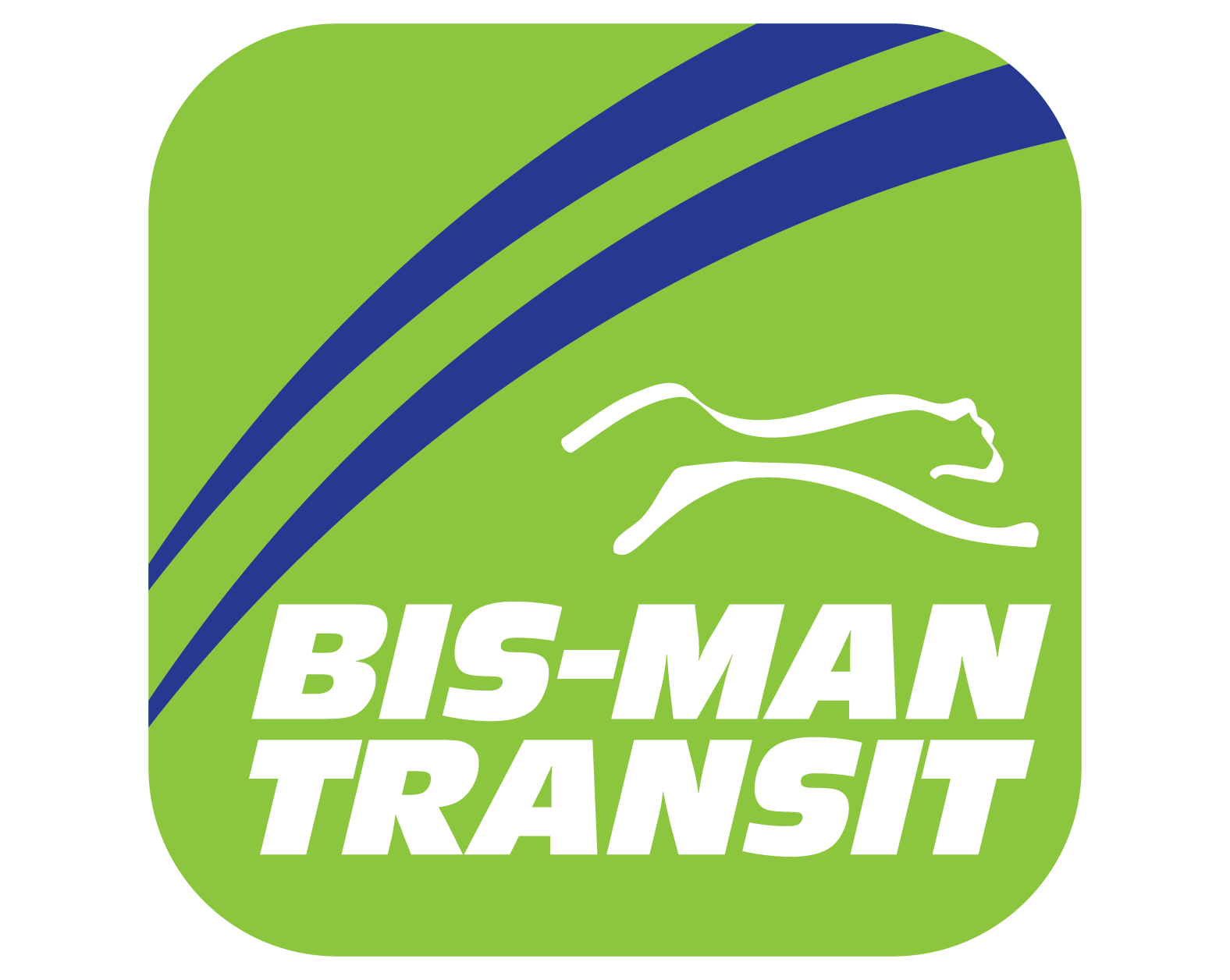Follow Us x
Our Mission:
Bis-Man Transit delivers valued public transportation, linking people, jobs and communities.
Our Vision:
Our vision is to provide safe, reliable, and efficient public transportation to support the overall quality of life in our communities.
Our Mission:
Bis-Man Transit delivers valued public transportation, linking people, jobs and communities.
Our Vision:
Our vision is to provide safe, reliable, and efficient public transportation to support the overall quality of life in our communities.
About Us
History
The Bis-Man Transit Board was incorporated as a non-profit organization on April 28, 1987 following more than a decade of concerned residents helping to create a coordinated transit system for senior citizens and individuals with disabilities. The committee that would become the Transit Board was established in Fall 1986 -- consisting of interested consumers and professionals -- and charged with the task of serving a specific population in the Bismarck-Mandan area with public transportation.
The purpose of the organization was to identify, promote, coordinate, and establish transportation services for seniors and individuals with disabilities; to identify and meet transportation service needs of these individuals as it relates to employment, medical, recreational issues; to establish a transportation network serving elderly and handicapped individuals utilizing federal, state, county and local funding sources.
Bismarck and Mandan were considered metropolitan areas and were allocated approximately $300,000 a year from the Urban Mass Transit Authority (UMTA). Because these funds had not been utilized in the area, after three years they were redistributed between Fargo, Grand Forks, and Minot. In order for the Bis-Man Transit Board to access these funds, Bismarck and Mandan had to match 50% of the operational losses, while UMTA would provide the other 50% of the operational losses.
Before the funds could be utilized, a transit study had to be developed. In the fall of 1988, Bismarck and Mandan contracted with BRW, an organization from Minneapolis, MN, to conduct the transit study and develop a transit plan. In December 1989, the final study and plan was received by the Transit Board and an application was submitted to the Denver Regional office of UMTA one month later. In September 1990, the final approval notification was received, and the plan was allowed to move forward, contingent upon matching funds being available.
Through various fundraising activities and a two-year grant first awarded in October 1989 from the North Dakota Council on Developmental Disabilities, sufficient funds were obtained to meet the match. In May 1990, a limited service for individuals with developmental disabilities began. A month later, the Transit Board contracted with Central NoDak Development Corporation for management staff and office space for the Bis-Man Transit Board.
The Transit plan, as initially developed, identifies the Bis-Man Transit Board as the broker for the cities of Bismarck and Mandan, while the temporary provider of services was Taxi 9000. The broker was responsible for the administration of the transit system, raising of the local, non-federal share to match the UMTA transit grant, soliciting of all proposals for service providers, verification and paying of provider invoices, monitoring provider compliance, providing all necessary monthly operating and financial reports, distributing service information materials, selling fare tickets, certifying all riders, maintaining a rider database, and handling of resolutions and complaints.
The provider’s role, as initially developed, was responsibility for door-to-door transportation of riders 24 hours a day, seven days per week and to provide all facilities, personnel, and equipment necessary to carry out the transportation service until vehicles were purchased by the broker and owned by the city.
The city’s responsibility was to establish all major service policies and procedures, final review and approval of administrative documents and budgets, and certain other functions connected with the program including liaison with the Urban Mass Transportation Administration on all grant and programmatic requirements.
The initial coordinated system, as developed, was a door-to-door, 24-hour in advance reservation system, available 24 hours per day, seven days per week. To qualify to be a certified rider, an application had to be completed with verification of being age 60 or older, or of having a certifiable disability.
The CAT
The push to start a fixed route system to serve Bismarck and Mandan began in August 2000 when consultants hired to conduct a transit study in the capital area requested data from Bis-Man Transit regarding the need and desire for public transportation services. In February 2001, three options were explored through the study: (1) Do nothing and leave things as they were, (2) Expand to Transit Dependent and add 5 fixed routes, (3) Decrease Demand Response and add 10-12 fixed routes. After considerable discussion between members of the Bis-Man Transit board, it was decided to pursue option 2.
In July of that year, a proposal based on the transit study was accepted by the Bismarck City Commission and the Metropolitan Planning Organization. In August 2003, it was recommended and approved that the fixed route system be called Capital Area Transit (CAT). An application for the name was submitted to the North Dakota Secretary of State office.
A competition was held among Bismarck State College commercial art class students to design a logo for CAT, Catherine Dalzell's winning design was chosen in December 2003. On May 6th, 2004, the official dedication of Capital Area Transit took place, with the system's first rides taking place on May 10th. Free rides were given during May and June to introduce the new service to the area.
Since 2004, Capital Area Transit has expanded to 6 routes serving Bismarck and Mandan. Riders utilize our public transportation services for a variety of reasons including work, school, volunteering, shopping, and socializing with family and friends.

